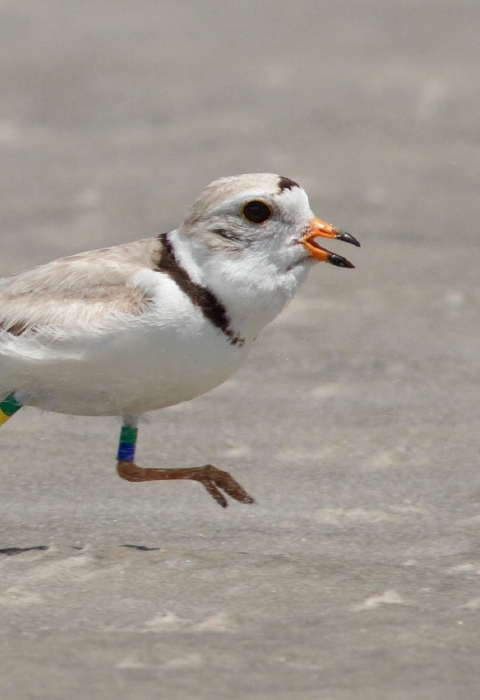What information should I send in?
The most important information is about the bands on the birds – their color, shape, and location on the bird’s legs.
There are eight possible positions on the legs of a plover that can have a band. Please pay special attention to the location of the bands on the plover you observed and describe them in your message to the bander. Below is a graphic depicting these locations. Remember, the left leg is defined as the bird’s left leg; i.e. if the bird were to look down, it would be its left side.
Flags on birds that carry no lower leg bands are almost always coded with either two or three alphanumeric characters that must be reported to identify the bird’s banding and resighting history. If a bird also has lower leg bands, then the flag is generally plain (no alphanumerics, only the color matters).
When reporting your banded bird, please include the following information:
- Location of the bird (including geographical coordinates if possible)
- Date bird was observed
- Description of the bands (which may be metal or color) and flags. Some characters and colors are easily confused with one another and sometimes colors fade, but a prompt report and ensuing email exchange between the bander and resighter can sometimes facilitate an email exchange that resolves the uncertainty. Take your time when observing and recording the band code. Please visit the U.S. Fish and Wildlife Service website for recommended resighting methods.
- Photo of the bird, if one was taken.
Where should I report the banded bird?
There are multiple projects across North America where piping plovers are being banded. Please consult this list and send your resight to the contact(s) that most closely matches the band combination that you saw. Just do your best - if you get it wrong, the message will be passed along to the correct person!
If Your Bird Has… | Report It To… |
Colors bands (no flag) on just the upper legs | and |
Green flag | |
Pink flag | and |
Black flag, White flag, or Gray flag | |
Yellow flag or Cobalt Blue flag | |
Orange flag or Metal band on an upper leg (no flag) and one or more color bands on the lower legs | |
Light Blue flag | and |
Red flag |



